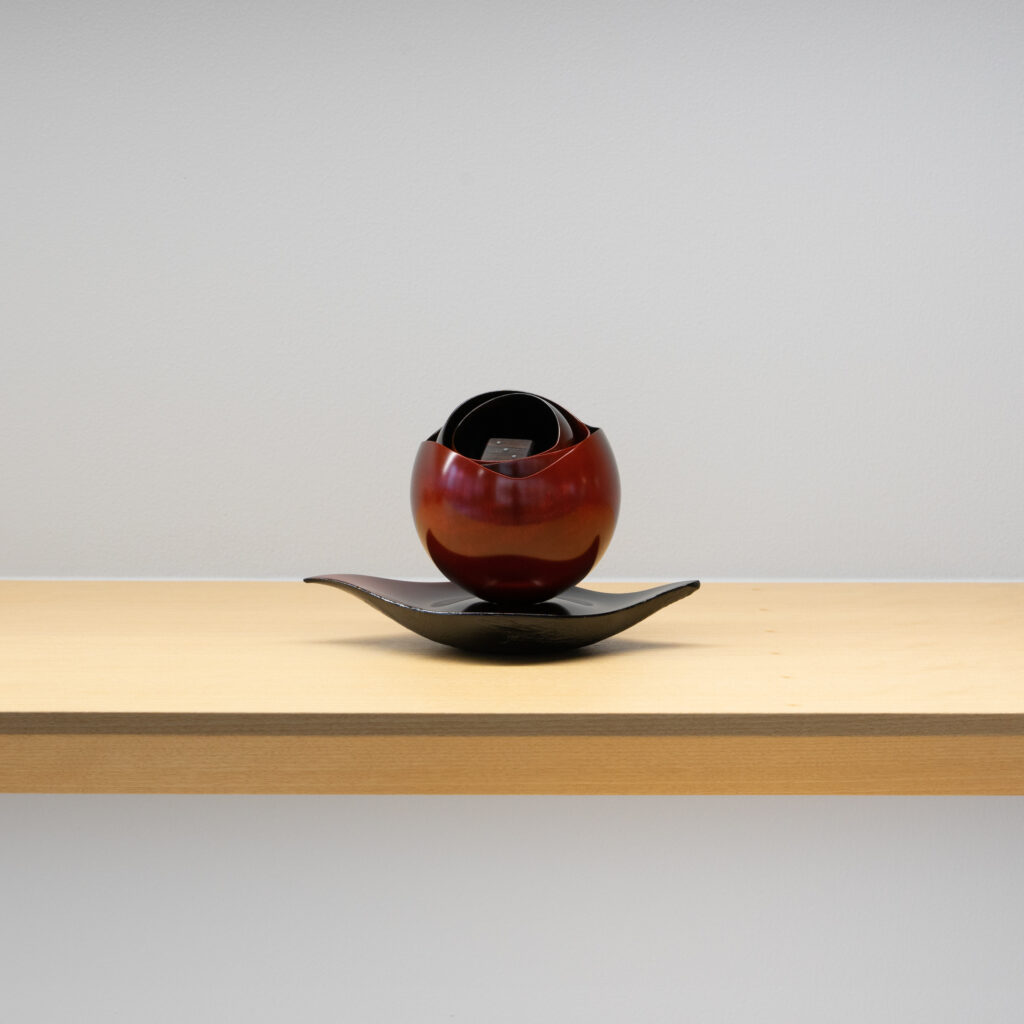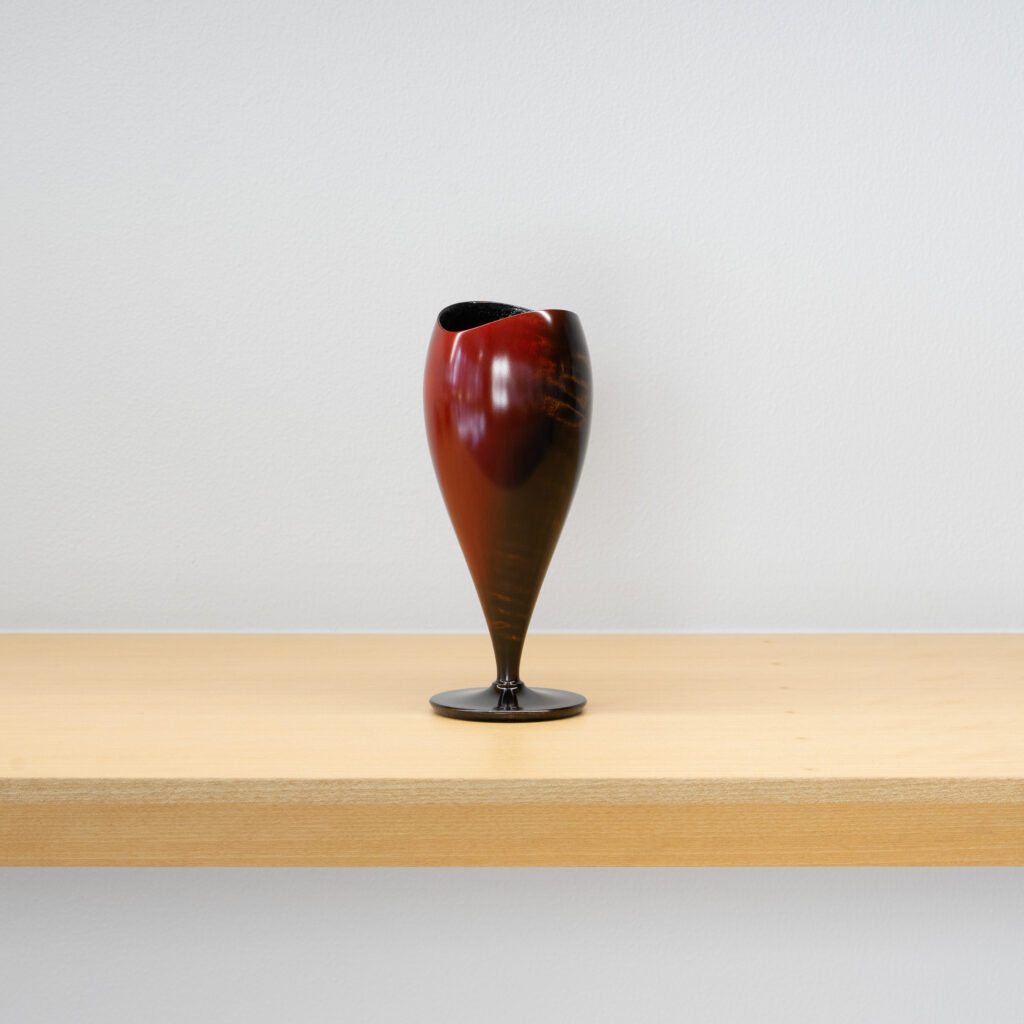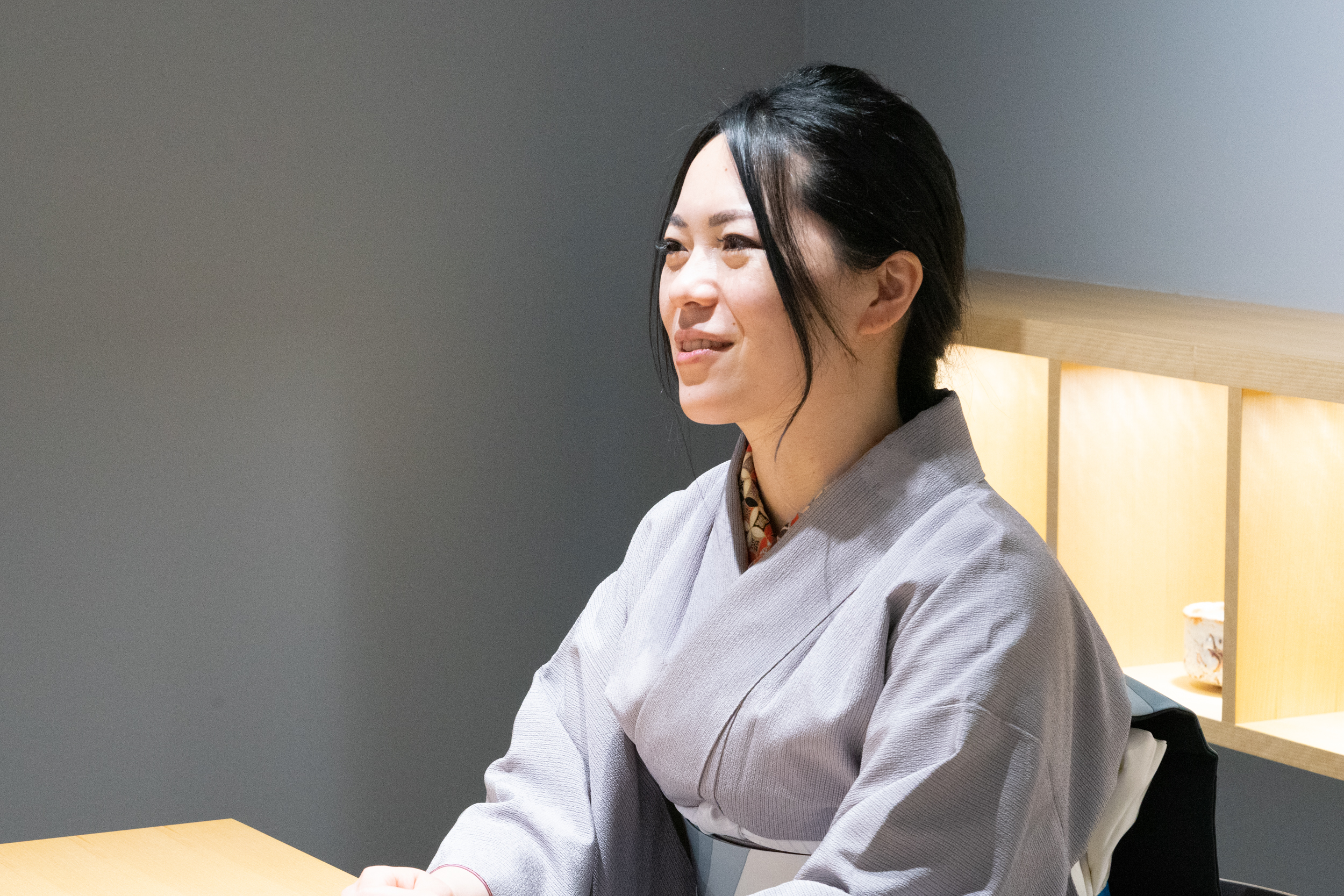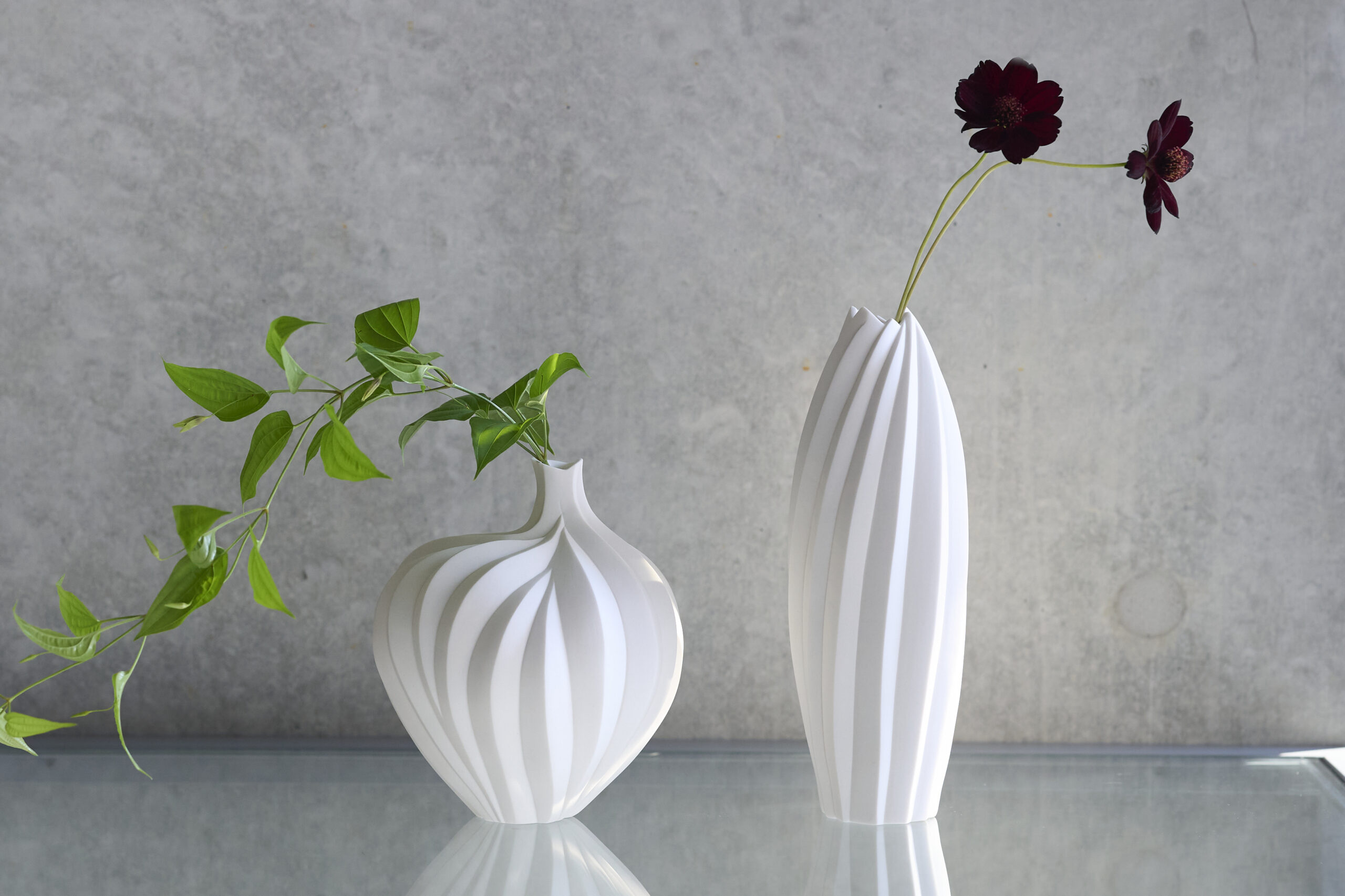In December 2021, HULS GALLERY TOKYO held a solo exhibition of Eiko Tanaka, a lacquer artist based in Kaga. As an affiliated event of this exhibition titled “Until Dawn”, we relayed an online event via Zoom to introduce the artist’s atelier. This interview article was created based on the discussed content.
– You are from Aichi Prefecture. When did you start working in Ishikawa Prefecture?
I started lacquer work at university and moved to Ishikawa Prefecture after graduation with the intention of improving the quality of my work.
– Ishikawa Prefecture is renowned for wood turning. Did you intend to learn it there?
Yes. The frustration I had during my student days was that I couldn’t make any shape myself. I thought it would be more effective and my senses would come to life if I could do it (wood turning) myself. And then I found this place.
– So you developed your own style by handling every process from wood-turning to lacquering. According to your biography, you became independent in 2012 and founded “Koubou (Studio) Akatoki”. Since then, you have been exhibiting and providing technical guidance in Tokyo and overseas such as New York and Indonesia.
Yes, indeed. Traditional Japanese techniques are hard to be introduced to the outside world. However, foreign craftspeople have deep interest in it and there might be new possibilities open up for me. I also got inspired by the interactions that I made with different people.
I had only been aware of traditional Japanese techniques before I went abroad. Since then, I started to make free-form lacquerware because I was inspired by the open and boundless ideas that I discovered in foreign countries.
– We also met you in Singapore. It was around the second half of 2018. At that time, you showed us various works and we exhibited some of them in Singapore. Subsequently, we held your solo exhibition in Tokyo. In 2019, you started your own “Gallery and Salon Roukoku” in Kaga, Ishikawa Prefecture. What made you decide to do it?
I started this gallery in order to allow people to experience the essence of Japanese culture in a broader sense. Thus, apart from exhibiting my works in the gallery, I hope to interact with people by amalgamating various Japanese elements such as serving local meals using handcrafted lacquerware so that they can immerse in the culture and experience it as a whole. This building is a traditional Japanese house with a storehouse. And I heard it was about 100 years old. I wanted to create a place that makes Kaga more attractive.
– Are all of your works made from Japanese horse chestnut?
Most of them are made from Japanese horse chestnut. I rarely use other wood materials unless the wood grain is attractive.
– Looking at your work, I feel that you really like this wood.
Japanese horse chestnut has a very unique expression of wood which we can’t find anything that is similar. I like to pay attention and enjoy observing every single one of them. I spend a lot of time making things that I am particular about, one after another. Thus, I hope the customers will treasure them as much. And I cherish the customers who appreciate every detail that I am particular about. I will be grateful if customers are able to find the piece that resonates with them, rather than settling on whichever is available. I want to make lacquerware with such individuality.
– Do you work on lacquering and woodturning in different periods?
The lacquer process begins only after making 30 to 40 pieces of wooden bases which take about a month to prepare. Lacquering is a slow process and therefore, I will work on wood and lacquering concurrently. I allocate certain timings for both lacquering and wood working in a day. And it is a pleasant change of pace.
– Where do you get the inspiration for your work?
Rather than inspiration, my first image of the creation is quite vague but it is the woodturning that helps to project the image quickly. I only think about the curvature but sometimes an image will appear in my mind when I am painting lacquer. And sometimes it could be words that arise during the making process. Instead of having a clear image of how it should be from the beginning, the final shape will be determined along the way. I am mindful of my senses while creating the works. Thus, even if I make the same type of work after six months, it will be different. I am open to changes and I do not think too hard.
– You are probably inspired by various things in your daily life.
In the first place, I became interested in lacquer because of its color. Somehow I found my favorite colors in Japanese lacquer and it all started from there. Maybe that is why I don’t draw pictures. Even when I work unintentionally, I will always cherish the images that I have deep inside my heart. I think the images of colors became the footprints although I do not notice and pay attention to them in my daily life.
– Many new works are showcased in this exhibition. You are expanding your range of expression.
I don’t want to set limits on what I can do. I am not a craftsperson but an artist. I decide on the things that I want to uphold and I would like to expand new possibilities based on that.
While “diversity” is one of the major themes in today’s context, I think most people are getting conscious of “individuality”. And if we do not express our individuality, we will be put out of sight. Japanese culture and traditional things have a strong presence, and it is our mission to disseminate them. I think it is a rewarding profession. And I will contemplate these things in relation to what I will do from now on.
When I was a woodturning artisan, I was told to value the tradition I inherit and to think about how to pass it on to the next generation. I wonder if there are different teaching methods other than what I was taught in the past. Apart from providing only one answer on how things should be made, I think it is important to ask this question, “There are styles like this, but what is yours?”. Otherwise, we will be the same as a machine. And I think we have to think about the meaning of making by hand.
– Please share with us your latest work in 2021 – “Tousui Sake Cup”.
One of the themes of my work is to create something enjoyable as an art object when not in use. In Japanese culture, we tuck away quality things and keep them unseen. On the other hand, people living overseas decorate their rooms with beautiful vessels and objects. Thus, I made this new work with the notion of incorporating that sensibility into Japanese elements.

– We feel that “Hiutsuri” which is another new work of yours made in 2021, looks wonderful and impressive too.
Some time ago, I was asked if I would make a wine glass. And at that time, I shunned myself from making it as I thought it would be better to create a vessel that is able to show the color of the wine. However, I have been drinking more sake recently and I felt that the size of sake cups may not match other tableware. Thus, I changed my mind and made this series of cups with a stem to enjoy drinking in a different way. The mouthfeel is also another attractive and important point when it comes to lacquerware for sake. I also planned the cutting angle and painting according to the wood grain, so there is nothing that looks exactly the same.

– Lastly, can you tell us about your solo exhibition “Until Dawn” that is being held at HULS GALLERY TOKYO?
I made them during the last two years when the Covid-19 pandemic took place. I spent a lot of time at home, so I pondered over what I wanted to express and what I thought was beautiful. I was able to do the things that I wanted to but couldn’t do before. There were no restrictions, and I was able to do it without worrying about time. I feel that I could express myself more than before.



